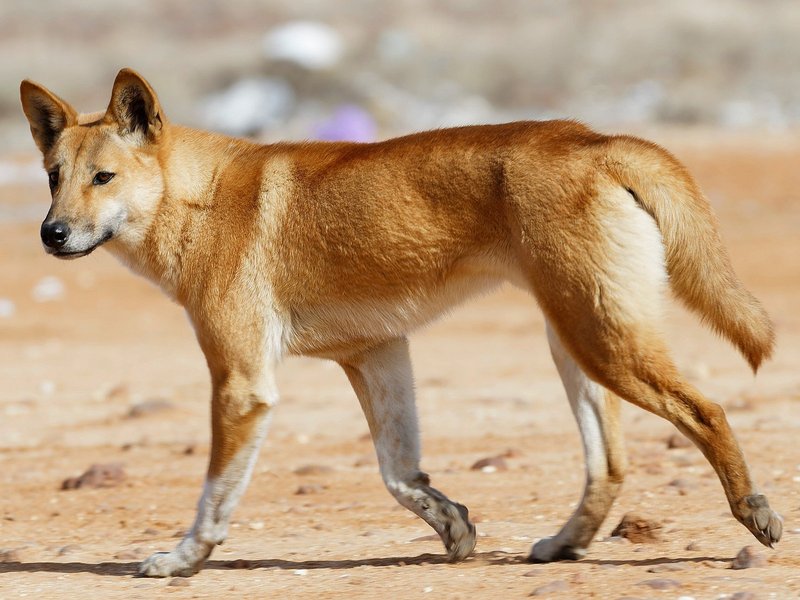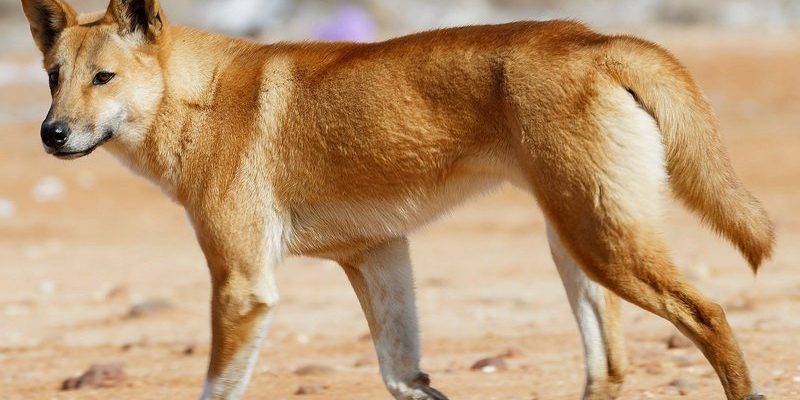
The Australian dingo is a fascinating creature that combines the wild beauty of nature with the spirit of the Australian landscape. Imagine a dog, but with a twist—this isn’t just any pet you might find at the local shelter. The dingo holds a special place in Aboriginal culture, and its presence in Australia dates back thousands of years. It’s not just a survivor; it’s a unique part of the continent’s ecology.
You might picture the dingo as a cunning hunter or a loyal companion, but its story is much more complex. With a stunning coat of golden fur and piercing yellow eyes, these wild dogs are both captivating and misunderstood. Often, people confuse them with domestic dogs, but the dingo has adapted to survive in the wild, making it distinct in behavior and genetics. Let’s dive deeper into the life of the Australian dingo, exploring everything from its habits to its impact on the environment.
What is a Dingo?
The term “dingo” refers to a subspecies of the grey wolf and is native to Australia. Unlike domestic dogs, dingoes have a unique genetic makeup that reflects their adaptation to the harsh Australian climate. Their presence is believed to date back around 4,000 years, when they were brought to Australia by Indigenous peoples.
So, what do dingoes look like? Typically, they have a lean build, allowing them to sprint swiftly across the varied Australian terrain. Their fur can range from pale blonde to reddish-brown, often with white markings on their paws, chest, and face. This coloration provides camouflage in the dry Australian bush, helping them remain undetected while hunting for food.
Emotionally, dingoes are known for their complex social structures. You may find them living in family groups, usually comprising a dominant male, a female, and their young. These packs work together to hunt and raise their pups, showcasing a dynamic that balances cooperation with competition.
Habitat and Distribution
Dingoes inhabit various environments across Australia, from deserts to forests and even coastal regions. They thrive in areas where food is abundant, and their adaptability allows them to range widely. In fact, their territory can span up to 100 square kilometers, depending on the availability of prey and water sources.
Interestingly, in recent years, dingoes have been seen extending their habitat into more urban areas. This shift can sometimes lead to conflicts with humans, as these wild dogs may scavenge for food, resulting in tension between dingoes and local communities.
To give you a clearer picture of their habitat, let’s compare the different regions where dingoes are found:
| Region | Description |
| Deserts | Arid landscapes, often hunting kangaroos and small mammals. |
| Forests | Dense bushland, where they prey on birds and reptiles. |
| Coastal Areas | Hunting along beaches and in estuaries for fish and crabs. |
Diet and Hunting Behavior
The diet of the Australian dingo is as diverse as its habitat. Primarily carnivorous, dingoes feast on small to medium-sized mammals like rabbits, wallabies, and kangaroos. They are also known to scavenge when food is scarce, displaying remarkable opportunism. Foraging helps them survive in an environment where food availability can fluctuate dramatically.
Dingoes are skilled hunters, often employing a strategy that involves teamwork, especially when tackling larger prey. When hunting in packs, they can coordinate their movements to corral their target, making them efficient and effective hunters. Imagine a well-rehearsed dance; they synchronize their efforts to outsmart their quarry.
Another interesting aspect is their adaptability in hunting methods. While chasing down prey is common, dingoes also utilize stealth and patience. They can wait quietly for hours, observing the surroundings before making a move. This flexibility in hunting techniques showcases their intelligence and ability to thrive in various conditions.
Behavior and Social Structure
The social structure of dingoes is both fascinating and complex. They typically live in family groups, which can consist of several adults and their pups. The bond among pack members is strong, with each member contributing to the responsibilities of hunting and rearing young. This cooperative approach not only ensures survival but also strengthens family ties.
Communication plays a significant role in their social dynamics. Dingoes use a mix of vocalizations, body language, and scent marking to convey messages. Their signature howl can be heard echoing across the Australian bush, serving both as a way to locate pack members and as a territorial marker.
It’s also important to note that dingoes exhibit a range of behaviors that reflect their intelligence. They can solve problems and adapt to new situations, which makes them remarkable survivors in the wild. This cleverness can sometimes lead them into conflicts with humans as they navigate the challenges of both natural and urban environments.
Reproduction and Lifespan
When it comes to reproduction, dingoes typically mate once a year, with the breeding season occurring during the cooler months. After a gestation period of about 60 days, the female usually gives birth to a litter of 2 to 10 pups. This time is critical for the survival of the young, as they rely on their parents for food and protection.
Both parents are involved in caring for the pups, showcasing their strong family bonds. Once the pups reach about 3 months old, they start to join the pack on hunts, learning essential skills required for survival. By the time they are about a year old, they are capable hunters themselves, ready to take on more responsibilities within their pack.
In terms of lifespan, dingoes in the wild usually live around 10 to 15 years, although factors such as diet, environment, and threats from humans can significantly influence their longevity. Understanding the life cycle of dingoes helps us appreciate their role in the ecosystem and the importance of conservation efforts.
Conservation Status
The conservation status of the dingo is a topic of vigorous debate. While they are not endangered as a species, their population has been affected by various factors, including habitat loss and hybridization with domestic dogs. This blending has raised concerns among conservationists, as it threatens the genetic integrity of the dingo.
Various organizations are advocating for the protection of purebred dingoes and their habitats. Numerous programs aim to monitor populations and educate the public about the ecological role dingoes play in Australia’s environment. This can include everything from managing livestock grazing to creating wildlife corridors that protect their natural habitats.
As more people become aware of the need to support the dingo’s future, the conversation shifts to responsible management of both dingoes and domestic dogs. By understanding their importance, we can foster coexistence and work towards a sustainable future where both can thrive.
FAQ
What is the scientific classification of the Australian dingo?
The Australian dingo belongs to the family Canidae and is scientifically classified as Canis lupus dingo. This classification places dingoes within the same group as wolves and domestic dogs, highlighting their shared ancestry and unique characteristics.
Are dingoes dangerous to humans?
Dingoes are generally shy and tend to avoid human contact. However, conflicts can arise, especially in urban areas where they may scavenge for food. While attacks on humans are rare, it’s essential to respect their wild nature and keep a safe distance if you encounter one.
How can I help conserve dingoes?
Supporting local conservation efforts, being mindful of your pets, and educating others about dingoes can make a difference. Advocating for policies that protect their habitats and encourage responsible land use is also vital for their well-being.
What do dingoes eat in the wild?
Dingoes primarily hunt small to medium-sized mammals such as rabbits and kangaroos. They also eat birds, reptiles, and occasionally scavenge for carrion when opportunities arise. Their diet reflects their adaptability to various environments.
Can dingoes be kept as pets?
While it’s technically possible to keep a dingo as a pet, it’s not advisable. Dingoes have specific needs that are difficult to meet in a domestic setting. They are wild animals with instincts that differ significantly from those of a domesticated dog.
How do dingoes communicate with each other?
Dingoes communicate through vocalizations like howling, growling, and barking, as well as through body language and scent marking. Their vocalizations can indicate everything from excitement to warnings of danger.
What impact do dingoes have on the environment?
Dingoes play a crucial role in the ecosystem as top predators. By controlling populations of herbivores, they help maintain the balance between various species and promote biodiversity within their habitats. This ecological role is essential for the health of the Australian landscape.
Are dingoes social animals?
Yes, dingoes are highly social creatures that live in family groups. These packs exhibit strong bonds and work together to hunt, care for pups, and defend their territory. Their social structure is essential for their survival in the wild.
How fast can dingoes run?
Dingoes can reach speeds of up to 30 kilometers per hour (about 18 miles per hour). Their speed and agility make them effective hunters, allowing them to chase down prey over long distances while conserving energy.
What is the typical lifespan of a dingo?
In the wild, dingoes typically live between 10 to 15 years. Factors such as diet, environmental conditions, and threats from humans can significantly affect their longevity, highlighting the need for conservation efforts.

